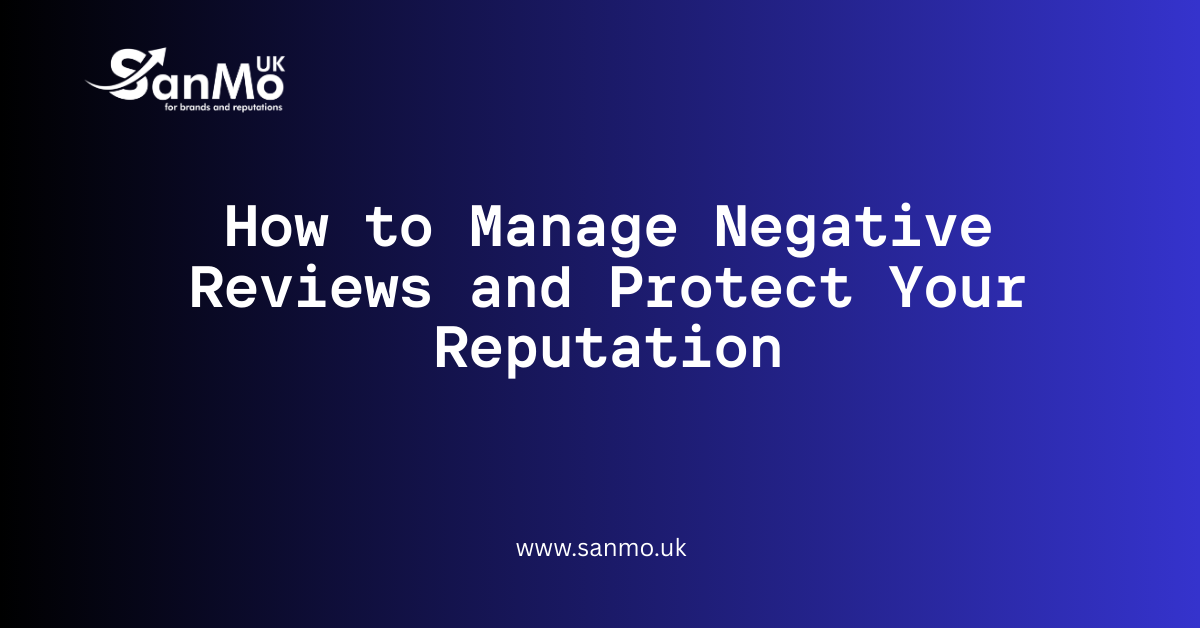Nobody wants to wake up to a one-star review calling their business “the worst experience ever.” Yet for most business owners, negative reviews are an inevitable part of doing business online. The good news? How you handle these reviews can actually strengthen your reputation and build customer trust.
Negative reviews don’t have to spell disaster for your business. When managed properly, they become opportunities to showcase your customer service, demonstrate accountability, and prove that you genuinely care about customer satisfaction. The key lies in having a strategic approach to review management that turns critics into advocates.
This comprehensive guide will walk you through proven strategies for managing negative reviews effectively, from immediate response tactics to long-term reputation recovery. Whether you’re dealing with your first bad review or looking to refine your existing approach, you’ll learn how to transform negative feedback into a competitive advantage.
Understanding the Impact of Negative Reviews
Before diving into management strategies, it’s crucial to understand just how significantly reviews influence consumer behavior. Research shows that 91% of consumers read online reviews before making a purchase decision, and a single negative review can drive away approximately 22% of potential customers.
However, the impact isn’t always as straightforward as it might seem. Consumers have become more sophisticated in how they interpret reviews. They often look for patterns in feedback and pay attention to how businesses respond to criticism. A business with all five-star reviews might actually seem less trustworthy than one with mostly positive reviews and a few negative ones handled professionally.
The real damage comes not from having negative reviews, but from ignoring them or responding poorly. Customers expect businesses to engage with feedback, both positive and negative. When you fail to respond to negative reviews, you send a message that customer satisfaction isn’t a priority.
Immediate Response Strategies
The first 24 hours after receiving a negative review are critical. Your response during this window sets the tone for how the situation will unfold and demonstrates to other potential customers how you handle problems.
Respond Quickly but Thoughtfully
Speed matters in review management, but rushing can lead to defensive or poorly constructed responses. Take time to read the review carefully and understand the customer’s specific concerns. A thoughtful response shows that you take feedback seriously and aren’t just posting generic replies.
Your initial response should acknowledge the customer’s experience, apologize for any inconvenience, and offer to discuss the matter further offline. This approach shows other readers that you’re proactive about customer service while moving the detailed conversation away from the public forum.
Keep Emotions in Check
Negative reviews can feel like personal attacks, especially for small business owners who pour their heart into their work. However, emotional responses almost always make the situation worse. Before crafting your response, step away from the computer, take a few deep breaths, and approach the situation objectively.
Remember that your response isn’t just for the reviewer—it’s for every future customer who will read it. A calm, professional response to an angry review actually makes your business look better, not worse.
Crafting Professional Response Templates
Having templates ready for different types of negative reviews can help you respond quickly while maintaining consistency in your tone and approach. However, these templates should serve as starting points that you customize for each specific situation.
Template for Service Issues
“Thank you for taking the time to share your feedback, [Customer Name]. I’m sorry to hear that your experience didn’t meet your expectations, particularly regarding [specific issue mentioned]. We take all feedback seriously as it helps us improve our services. I’d appreciate the opportunity to discuss this matter with you directly and work toward a resolution. Please contact us at [contact information] at your convenience. Thank you for giving us the chance to make this right.”
Template for Product Quality Concerns
“Hi [Customer Name], thank you for your honest review. I apologize that the [product/service] didn’t meet the quality standards you expected. This is certainly not the experience we want any customer to have. We’d like to investigate this issue further and discuss how we can resolve it for you. Please reach out to us directly at [contact information] so we can make this right. We value your business and appreciate your feedback.”
Template for Misunderstandings
“Thank you for your review, [Customer Name]. I’m sorry there seems to have been a misunderstanding about [specific issue]. We always strive to be clear in our communications, and it sounds like we fell short in this case. I’d love the opportunity to clarify this situation and ensure you have all the information you need. Please contact us at [contact information] when it’s convenient for you.”
Long-term Reputation Recovery
While immediate responses are important, building a strong long-term reputation requires ongoing effort and strategic thinking. This involves not just managing negative reviews but actively encouraging positive ones and continuously improving your business based on feedback.
Encouraging Positive Reviews
The best defense against negative reviews is having plenty of positive ones to balance them out. Develop systematic approaches for encouraging satisfied customers to leave reviews. This might include follow-up emails after purchases, incentives for honest feedback, or simply asking customers directly when you know they’ve had a good experience.
Make it easy for customers to leave reviews by providing direct links to your review platforms and clear instructions. The more positive reviews you accumulate, the less impact individual negative reviews will have on your overall rating and reputation.
Learning from Feedback
Every negative review contains valuable information about your business. Look for patterns in complaints—are multiple customers mentioning the same issue? Are there specific services or products that consistently receive criticism? Use this feedback to make meaningful improvements to your business operations.
Document common complaints and track how you’ve addressed them. This not only helps you improve but also gives you concrete examples of how you’ve responded to feedback when talking to potential customers.
Review Management Best Practices

Successful negative reviews management requires consistency and systematic approaches. Develop clear processes that everyone on your team can follow, ensuring that your response quality remains high even as your business grows.
Monitor Multiple Platforms
Don’t limit your monitoring to just Google or Yelp. Customers might leave reviews on Facebook, industry-specific sites, or even social media platforms. Set up Google Alerts for your business name and use reputation management tools to track mentions across the web.
Regular monitoring allows you to catch negative reviews early and respond before they have time to influence many potential customers. It also shows customers that you’re actively engaged with feedback across all platforms.
Train Your Team
If multiple team members handle customer service, ensure they all understand your review response protocols. Inconsistent responses can confuse customers and damage your reputation. Create clear guidelines about tone, response timeframes, and escalation procedures.
Consider designating specific team members to handle review responses, as this ensures consistency and allows those individuals to develop expertise in managing difficult situations diplomatically.
Follow Up on Resolutions
When you successfully resolve a customer’s issue, don’t be afraid to ask if they’d consider updating their review to reflect the resolution. Many customers are willing to revise their feedback when businesses make genuine efforts to address their concerns.
Keep records of how you’ve resolved various issues. This documentation can be valuable for training purposes and helps you track which solutions are most effective for different types of complaints.
Advanced Recovery Strategies
For businesses dealing with particularly challenging review situations, more advanced strategies may be necessary. These approaches require more time and resources but can be highly effective in serious reputation crises.
Professional Review Management Services
Consider working with companies like SanMo UK that specialize in review management and online reputation repair. These services can help with everything from developing response strategies to implementing systems for encouraging positive reviews.
Professional services often have access to advanced monitoring tools and can provide expertise in handling complex situations that might be beyond the scope of typical business operations.
Legal Considerations
While rare, some situations may require legal intervention. Completely false reviews that contain defamatory statements might be grounds for removal requests or legal action. However, this should always be a last resort, as legal actions can draw more negative attention to the situation.
Before pursuing legal options, consult with attorneys who specialize in online reputation law. They can help you understand what constitutes actionable defamation versus legitimate criticism.
Measuring Success in Review Management
Effective review management isn’t just about responding to negative reviews—it’s about systematically improving your overall online reputation. Track key metrics to understand how your efforts are paying off.
Monitor your overall rating trends across platforms, response times to negative reviews, and the percentage of negative reviews that result in follow-up positive interactions. Also track how often customers update their reviews after you’ve addressed their concerns.
Consider conducting periodic audits of your review responses to ensure they maintain consistent quality and tone. This helps you identify areas for improvement in your approach and ensures that your team’s responses align with your brand values.
Building Review Management Into Your Business Operations
The most successful businesses treat review management as an integral part of their customer service strategy, not an afterthought. Build systems that make it easy to monitor, respond to, and learn from reviews consistently.
Create standard operating procedures for different types of reviews, establish clear timelines for responses, and integrate review monitoring into your daily business routines. This systematic approach ensures that review management remains consistent even during busy periods.
Regular team meetings should include discussions about recent reviews and what they reveal about customer satisfaction. Use this feedback to make continuous improvements to your products, services, and customer experience.
Turning Negative Reviews Into Business Growth
When handled correctly, negative reviews become powerful tools for business improvement and customer relationship building. They provide direct feedback from customers, opportunities to demonstrate excellent customer service publicly, and chances to show potential customers how you handle problems.
The businesses that thrive online aren’t those without negative reviews—they’re the ones that handle negative feedback professionally and use it to continuously improve. By implementing the strategies outlined in this guide, you can transform your approach to negative reviews from defensive damage control to proactive reputation building.
Remember that every negative review is an opportunity to show potential customers how much you value customer satisfaction and how professionally you handle challenges. With the right approach, negative reviews management becomes a competitive advantage that sets you apart from businesses that ignore customer feedback or respond poorly to criticism.
Every negative review is a chance to show what your business is made of.
SanMo UK can help you respond strategically and recover your reputation.
Reach out today for a customized review management strategy.








